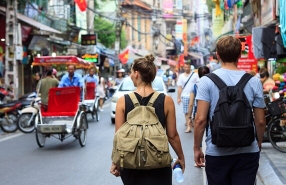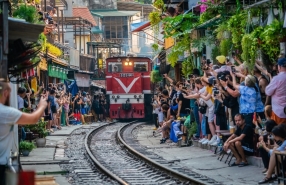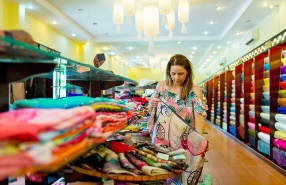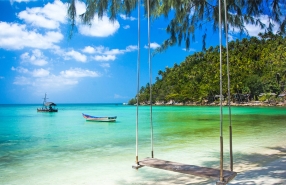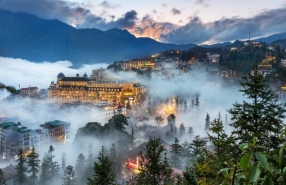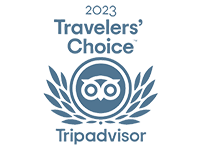French Quarter In Hanoi - What To See And Visit?

The French Quarter in Hanoi is one of the most iconic areas of the Vietnamese capital. With its wide tree-lined boulevards, elegant colonial villas, and historic landmarks, it reflects the architectural legacy of the French colonial era. Located in the heart of the city, this district charms both history enthusiasts and romantic walkers. Strolling through its streets is like traveling back in time, with a blend of colonial heritage and modern Vietnamese life. To plan your itinerary and make sure you don’t miss any must-see sites, it’s best to rely on the expertise of Vietnam travel agency - Autour Asia, a specialist in tailor-made trips. In this article, discover what to see and visit in this unique French Quarter in Hanoi — a true cultural and architectural treasure.
Table of Contents
I. Overview of the French Quarter in Hanoi
The French Quarter in Hanoi is one of the jewels of the Vietnamese capital. Located near Hoan Kiem Lake, it stands out with its wide tree-lined boulevards, elegant villas, and emblematic monuments built during the colonial era. Sometimes nicknamed “the little Paris of the East,” this area offers a unique blend of French heritage and Vietnamese culture. Its refined atmosphere contrasts with the bustling Old Quarter nearby, creating a historical haven in the heart of a vibrant city.
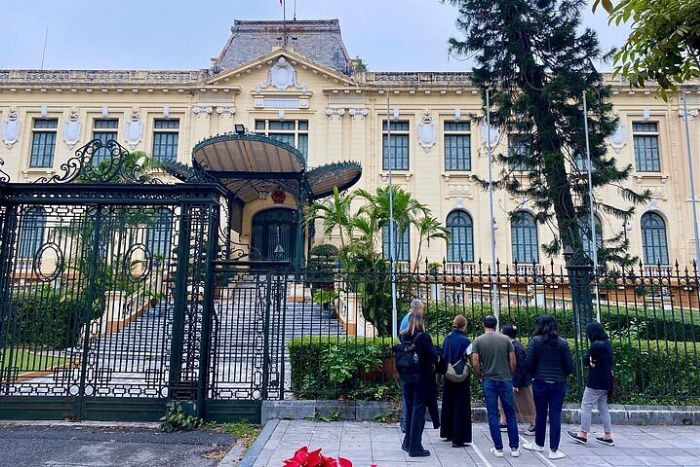
Visiting the French Quarter in Hanoi is not only an opportunity to admire beautiful buildings but also to better understand Vietnam’s modern history and evolution. In this article, we guide you through the must-see landmarks and give you practical tips to make the most of your visit. To better locate the area, you can check our Hanoi tourist map. With the expertise of Vietnam travel agency - Autour Asia, you’ll have everything you need to explore this fascinating part of the capital.
II. History and identity of the French Quarter in Hanoi
The French Quarter in Hanoi emerged at the end of the 19th century when Hanoi became the capital of French Indochina. This sector was designed to host administrative buildings, governors’ residences, and cultural institutions. Inspired by European urban models, it contrasts sharply with the Old Quarter’s narrow, bustling streets.
Over time, the area evolved. After Vietnam’s independence in 1954, many colonial buildings were converted into museums, embassies, or government institutions. French heritage remains strongly present in architecture, urban planning, and even in some cafés that still retain Parisian flair.
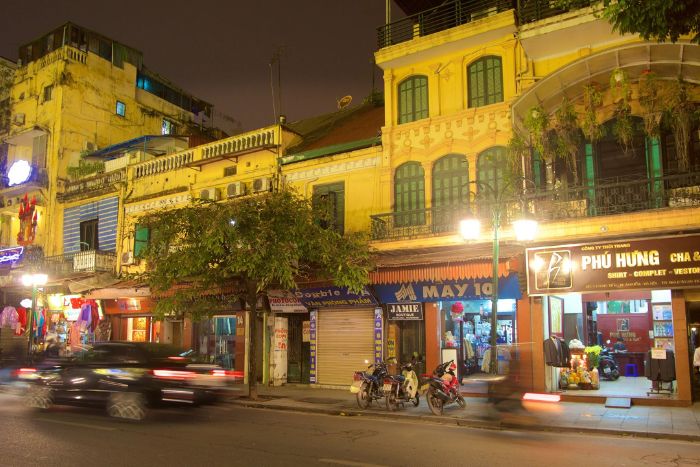
Today, the French Quarter in Hanoi is a must-visit tourist destination. It embodies both the colonial past and the modernity of Hanoi. Here, you can walk along quiet, leafy streets, admire historic landmarks, and feel a uniquely European atmosphere in Asia.
III. Iconic landmarks and sites to visit
1. Hanoi Opera House
Built in 1911, Hanoi Opera House is perhaps the most emblematic symbol of the French Quarter in Hanoi. Inspired by the Palais Garnier in Paris, it features a majestic neoclassical façade with columns, balconies, and domes. Once reserved for the colonial elite, it now hosts concerts, ballets, and national performances. Its imposing silhouette dominates Opera Square, a lively meeting place for locals and visitors alike.
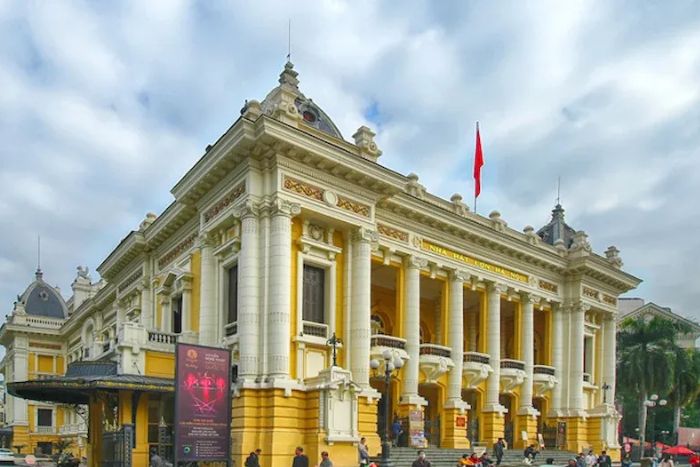
2. Saint Joseph’s Cathedral
Built in 1886, Saint Joseph’s Cathedral is one of Vietnam’s oldest Catholic churches. In Gothic style, it resembles Notre-Dame Cathedral in Paris with its colorful stained glass and twin bell towers. This place in French Quarter in Hanoi remains very active and attracts both worshippers and tourists daily. The square in front of the cathedral has become a popular gathering spot for young Hanoians, especially in the evening.
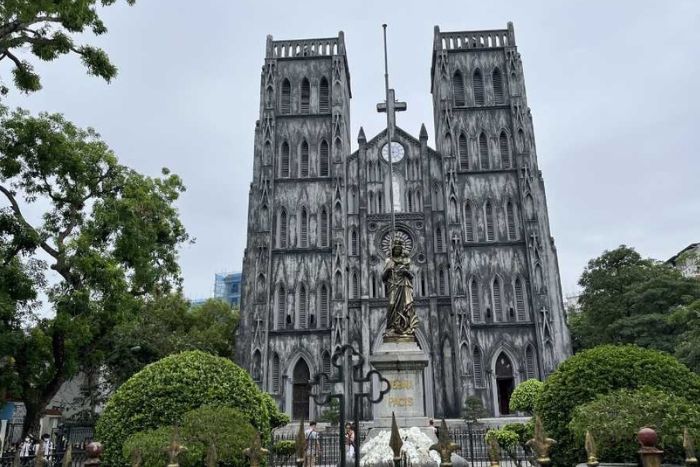
3. Presidential Palace
Former residence of the Governor-General of Indochina, the Presidential Palace was built in 1906 in Italian Renaissance style. Its bright yellow color has become a true Hanoi icon. Today, it serves as an official government building and cannot be visited inside. However, the gardens and Ho Chi Minh’s stilt house nearby are open to the public.
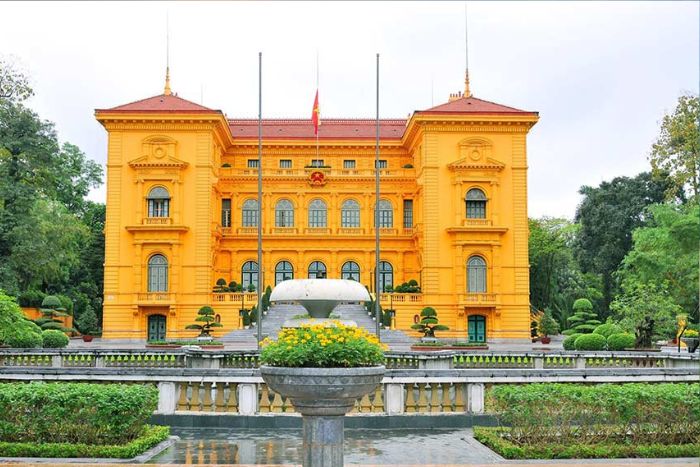
4. Vietnam History Museum
Housed in a former colonial building with a blend of neoclassical and oriental styles, the Vietnam History Museum contains an impressive collection covering over 4,000 years of history. Visitors can discover archaeological artifacts, Cham and Khmer sculptures, and objects linked to Vietnam’s imperial dynasties.
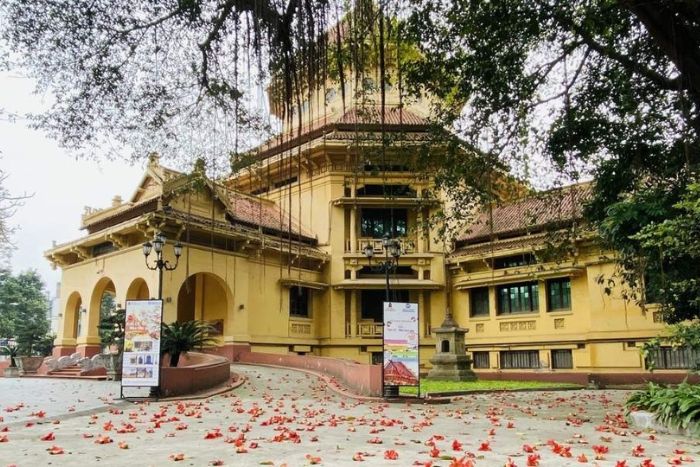
5. Embassies and colonial buildings
Strolling through the French Quarter in Hanoi also means admiring the many embassies and colonial villas lining the avenues. These elegant buildings showcase the refined architecture of the era. Some European embassies retain a very Parisian look, reinforcing the feeling of traveling between two worlds.
IV. Other attractions nearby
Staying in the French Quarter in Hanoi makes it easy to access other major attractions:
- Hoan Kiem Lake and Ngoc Son Temple: Just a few minutes’ walk away, this mythical place is the spiritual and historical heart of the capital.
- Hanoi Old Quarter: Its lively streets, traditional shops, and markets contrast with the elegance of the French Quarter.
V. Tips for visiting the French Quarter in Hanoi
The French Quarter in Hanoi is perfect for exploring on foot or by bicycle. Its wide, shaded avenues make for strolls.
- Best time to visit: Prefer the morning, when the light highlights the architecture, or late afternoon to enjoy the lively terrace atmosphere.
- Transportation: Taxis are available, but walking remains the best way to appreciate its charm.
- Recommended walks: Take time to stop at local cafés and bakeries, where the French influence is still alive.
- Unique atmosphere: Colonial villas, flower gardens, and green boulevards create an ideal setting for cultural exploration and photography.
- Art and shopping: Several art galleries and designer boutiques pleasantly complement the visit.
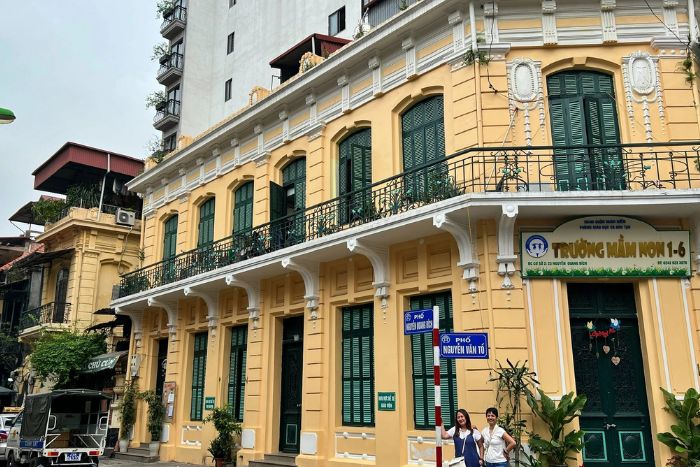
The French Quarter in Hanoi is much more than a colonial relic: it’s a place of memory, culture, and modernity. From the Opera House and the Cathedral to the Presidential Palace and countless colonial villas, it offers a unique immersion into the shared history of Vietnam and France. During your trip, taking the time to explore this district will help you understand Hanoi’s rich diversity. With our Hanoi map, you can easily plan your itinerary and combine your visit to the French Quarter in Hanoi with the capital’s other treasures. For an even more complete experience, turn to Vietnam travel agency - Autour Asia, our team will advise and guide you through the country’s most beautiful sites. Exploring the French Quarter in Hanoi means immersing yourself in a singular atmosphere blending European refinement with Vietnamese authenticity — an unmissable stop on any trip to Hanoi.
> Mai Hich Mai Chau
> Vietnam Travel Guide
> North Vietnam tours
> Mu Cang Chai Hanoi 3 days
The answer to the question of how many days in Hanoi depends on each traveler’s pace and interests. In general, two to three days are enough to explore the main highlights such as Hoan Kiem Lake, the Old Quarter, Ho Chi Minh Mausoleum, and the French Quarter. However, if you have four to five days, you can also visit museums, enjoy local gastronomy, and take short excursions to places like the Perfume Pagoda or Bat Trang pottery village. For a deeper immersion, spending a full week allows you to combine cultural discoveries, leisurely walks through different neighborhoods, and day trips around Hanoi for a richer travel experience.
Spending 4 days in Hanoi allows you to fully enjoy the capital and explore its many facets. On day one, dive into the Old Quarter with its bustling streets, traditional markets, and Hoan Kiem Lake. On day two, explore the French Quarter in Hanoi, the Opera House, Saint Joseph’s Cathedral, Ho Chi Minh’s Mausoleum, and the Presidential Palace. Dedicate your third day to museums (such as the Ethnology Museum or Vietnam History Museum) and a walk around West Lake. Finally, spend the last day on a day trip near the city, like the Perfume Pagoda or Bat Trang pottery village, to round out your experience.
When it comes to transportation in Hanoi, travelers have a variety of choices depending on their budget and comfort. Walking is one of the best ways to explore central areas like the Old Quarter and the French Quarter, thanks to their lively streets and short distances. For longer rides, taxis and ride-hailing apps such as Grab are widely available and affordable. Motorbike taxis (xe ôm) offer a more local and adventurous experience. Public buses connect different districts at very low cost, though they can be crowded during peak hours. For a unique touch, cyclo rides provide a slow and charming way to see the city. Renting a scooter is another option for experienced drivers, offering total flexibility to explore Hanoi at your own pace.
Related travel guide
Other similar articles
CUSTOMIZABLE BY LOCAL EXPERTS
Personalized trip at the original price!
REFUND GUARANTEE
We believe in our work and promise to give you money back.
GOOD PRICE / QUALITY
95% satisfied more than expected!
24/7 LOCAL SUPPORT
We are always available online to provide assistance at any time.
Most read articles
Autour Asia is highly recommended on
Embracing the mission of "Satisfied more than expected" and providing authentic experiences, we have received numerous recommendations on reputable travel forums:













